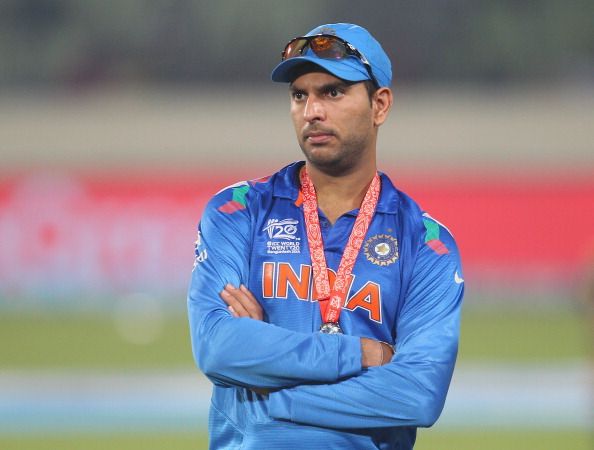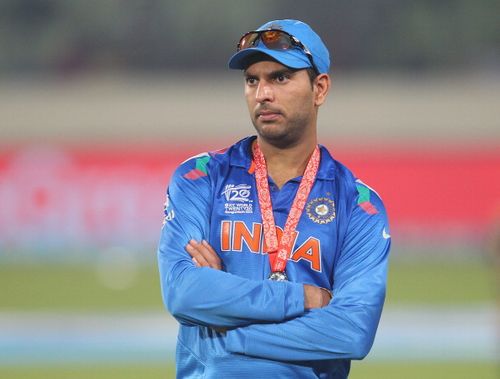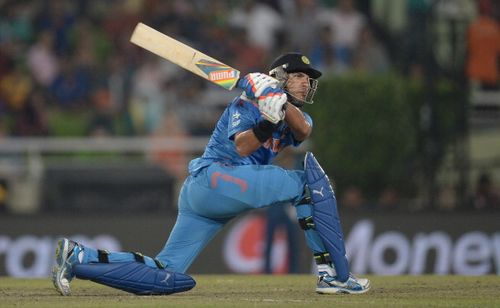
In support of India's great match-winner Yuvraj Singh

Yuvraj Singh – India’s great match-winner
11 runs off 21 balls in the final of the World T20, 2014, which eventually sucked all momentum out of India’s innings. Is this how will we remember Yuvraj Singh? Will this be the legacy that he will leave behind? Sports can be cruel. Fans can be, and will be, unforgiving, and unrelenting. They will also put you on a pedestal. They will worship you. If you fail, they’ll burn your effigies. They will pelt stones at your home.
Yes, Yuvraj played awfully in the finals. His innings may well have been the one defining reason for India’s loss. Apart from an innings of 60 odd runs against Australia, he looked woefully out of form throughout the tournament. In fact, ever since he has returned to international circuit after his cancer treatment, he has been blowing hot and cold.
However, it is for the team management and the selectors to decide whether he should be playing or not. The fans should not be the judge of that. They can criticize his performance, but they should not ridicule and crucify him. The jokes, the fake facebook pages, mouthing of expletives, pelting of stones at his residence are totally uncalled for and just shows how shallow our understanding of the game, or the respect or love for our senior team players is.
Irrespective of the aftermath of his innings in the finals, he deserves to be given a longer rope. This may be a cliché, but Yuvraj is a proven match-winner for India, ever since he debut in 2000. He was the pivot in India’s middle order and had many fruitful match-winning partnerships with Rahul Dravid, Suresh Raina and MS Dhoni throughout his career. He contributed immensely in India’s Under-19 world cup in the year 2000. In less than a year, he was playing for the seniors’ team.
At only 18 years of age, he scored a memorable 84 runs off 80 balls in only his second ODI in the ICC KnockOut Tournament to take India to the semi-finals. He follows it up with a sublime 98 against Sri-Lanka in Colombo in the Coca-Cola Cup of 2001 and set up India’s victory from seemingly dire circumstances. His and Mohammed Kaif’s match-winning knocks against England in the Natwest Tri-series final in 2002 is a stuff of folklore now.
He also had a fairly decent World Cup in 2003, with some critical knocks against Pakistan and Kenya in the quarter and semi-finals. His role in World T20 2007 and the World Cup 2011 is do not need any mention here. Throughout the last decade, he has been piling on runs and contributing immensely to the rise of India in the limited overs fold. To add onto his batting, he brings on the table, his supreme fielding skills and more-than useful left-arm slow bowling.
I do understand the fact that one does not have the privilege to be a part of the team by solely resting on past laurels. One needs to perform consistently to deserve a place in the team, especially when you have younger talent waiting for a chance. However, it is pertinent to note here that his form in the T20 format has been more or less, decent (barring this World T20). He scored a blistering 77 of 35 balls against Australia to set up an improbable victory. He had also scored a magnificent 72 runs off 36 balls against Pakistan. He has played many other handy knocks, which has contributed to the team’s success. It is only in the 50 over format that he has been that his form has been really found wanting. He hasn’t been among the runs at all in this format and has lost his place in the team also.

Yuvi needs to work on his game in domestic cricket
He needs to go back to the domestic circuit and work on his flaws. He is not as technically sound as a Dravid or Tendulkar, and has never relied heavily on his foot-movement. However, he has high and pronounced bat-lift and always heavily relied on his hand-eye coordination to bring the bat down in time. This was why he used to hit the ball as cleanly as they can be hit. This hand-eye coordination seems to be deserting him more often than not in the recent times. Ageing, and his fight with cancer, may be a reason for his reduced hand-eye coordination. However, at 32, I believe that there is still a lot of cricket left in him.
What he needs to do is to lower the bat-lift which will give him more time to react to the delivery, and negate the reduction in had-eye coordination. This will make him focus more on timing the ball and he may not be able to hit his trademark big sixes over the deep mid-wicket, or be the hard-hitting batsman, with which he is synonymous. However, this will enable him to score runs and prolong his career.
Every batsman faces testing times in his career. Nobody is at the top of his game throughout. However, the hallmark of greatness is how you respond to the situation and emerge from the slump you are in. It remains to be seen what will Yuvraj do.